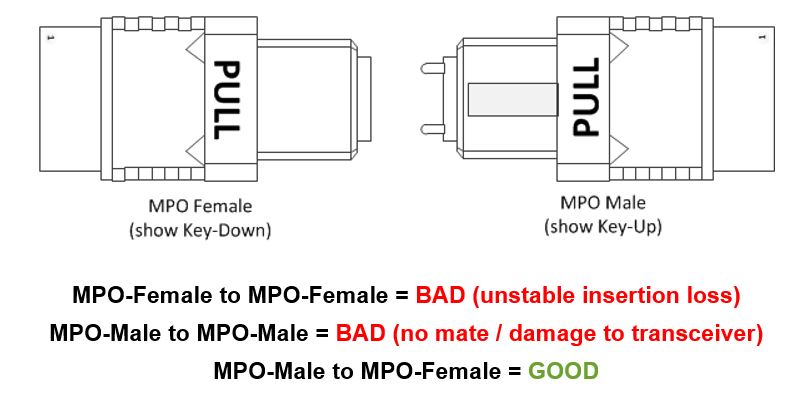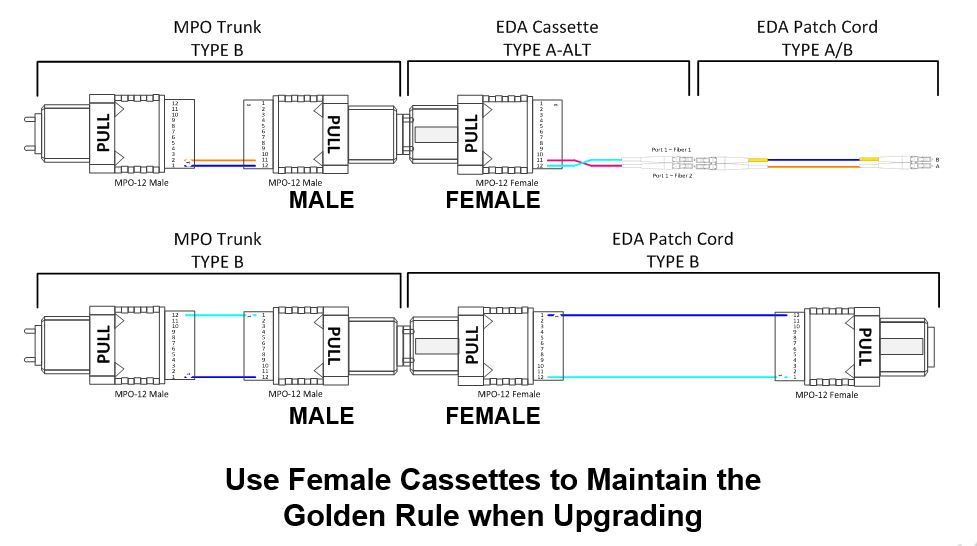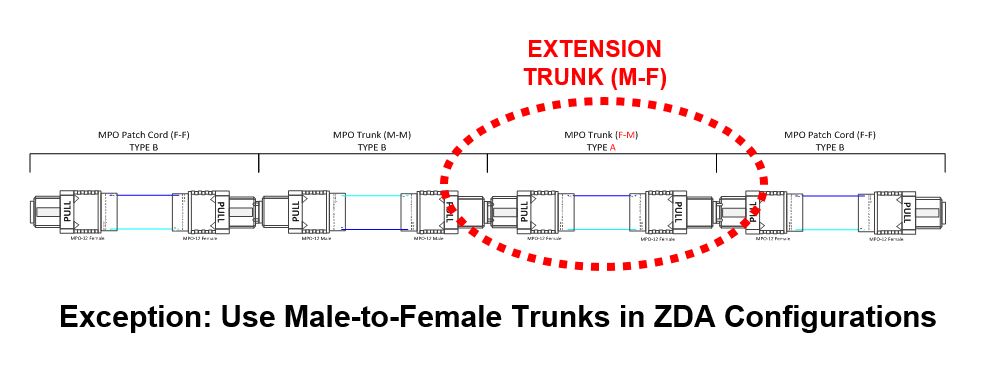The Golden Rule of Polarity
When it comes to ensuring polarity so that the transmit signal (Tx) at one end of the channel matches the corresponding receiver (Rx) at the other end, there is one golden rule to live by:
Always use the same type of patch cord within a single facility
When fiber patch cords have different polarity schemes and gender, IT staff needs to be very careful when replacing patch cords in the field. Those that don’t understand polarity or are in a rush to get equipment up and running can potentially use the wrong patch cord and impact signal transmission.
In the case of multi-fiber MPO patch cords, using the wrong gender can also damage critical active equipment. Having the same patch cord polarity and gender throughout the facility eliminates these
risks and facilitates inventory management.
The remaining rules of polarity all stem from this golden rule.
Always Use Type A/B for LC Duplex Patch Cords

Always Use Type B Female-to-Female for MPO Patch Cords

IMPORTANT - Improper MPO Gender Mating Can Lead to Network Performance Issues

Type A/B duplex patch cords are the standard crossover cord that maps the Tx port to the Rx port and Type A/A patch cords are a straight cord with no flip that maps the Tx port to the Tx port. Type A/A cords should be avoided as they only work when there is an even number of segments. With the flip, Type A/B cords maintain proper polarity regardless.
Like Type A/A duplex cords, Type A MPO cords map Tx ports to Tx ports (i.e., port 1 to port 1), while Type B MPO cords map Tx ports to Rx ports. Type C MPO cords feature a pair flip that was originally introduced for duplex applications but does not work well with today’s 8-fiber SR4 protocols.
With MPO cords, gender is the biggest concern. MPO interfaces on active equipment are always male (pinned). To avoid damage to the transceiver, MPO patch cords should therefore always be female-to-female (unpinned).
Always Use Female MPO Cassettes and Male-to-Male Type B MPO Trunks

Because female-to-female MPO patch cords are required to avoid transceiver damage, MPO-to-LC cassettes should be female. These in turn require the use of male-to-male trunks. This allows for upgrading from a duplex application to an SR4 protocol by simply removing the LC duplex patch cords and plugging in the required female-to-female MPO patch cord.
MPO Trunks should also be Type B. When using a duplex protocol like 10 gig or 40 gig bi-directional, the Type A MPO that maps Tx ports to Tx ports causes a Tx/Rx reversal that requires the use of Type A/A duplex cords at one end of the channel. And that goes against the golden rule of using one type of patch cord per facility.
There’s Always an Exception to the Rule
-
When using a 3- or 5-point zone distribution area (ZDA) configuration where MPO trunks are brought from the core or main cross connect to the ZDA at an end of row (EoR) or middle of row (MoR) location and then extended from there to the top of rack, a Type A female-to-male trunk assembly is required to maintain polarity and proper patch cord configurations at both ends.
![System.String[]](https://assets.belden.com/transform/6f3d8fa5-c6c4-4981-8214-fac7b322e317/dwayne-crawford?io=transform:fill,width:300,height:300)